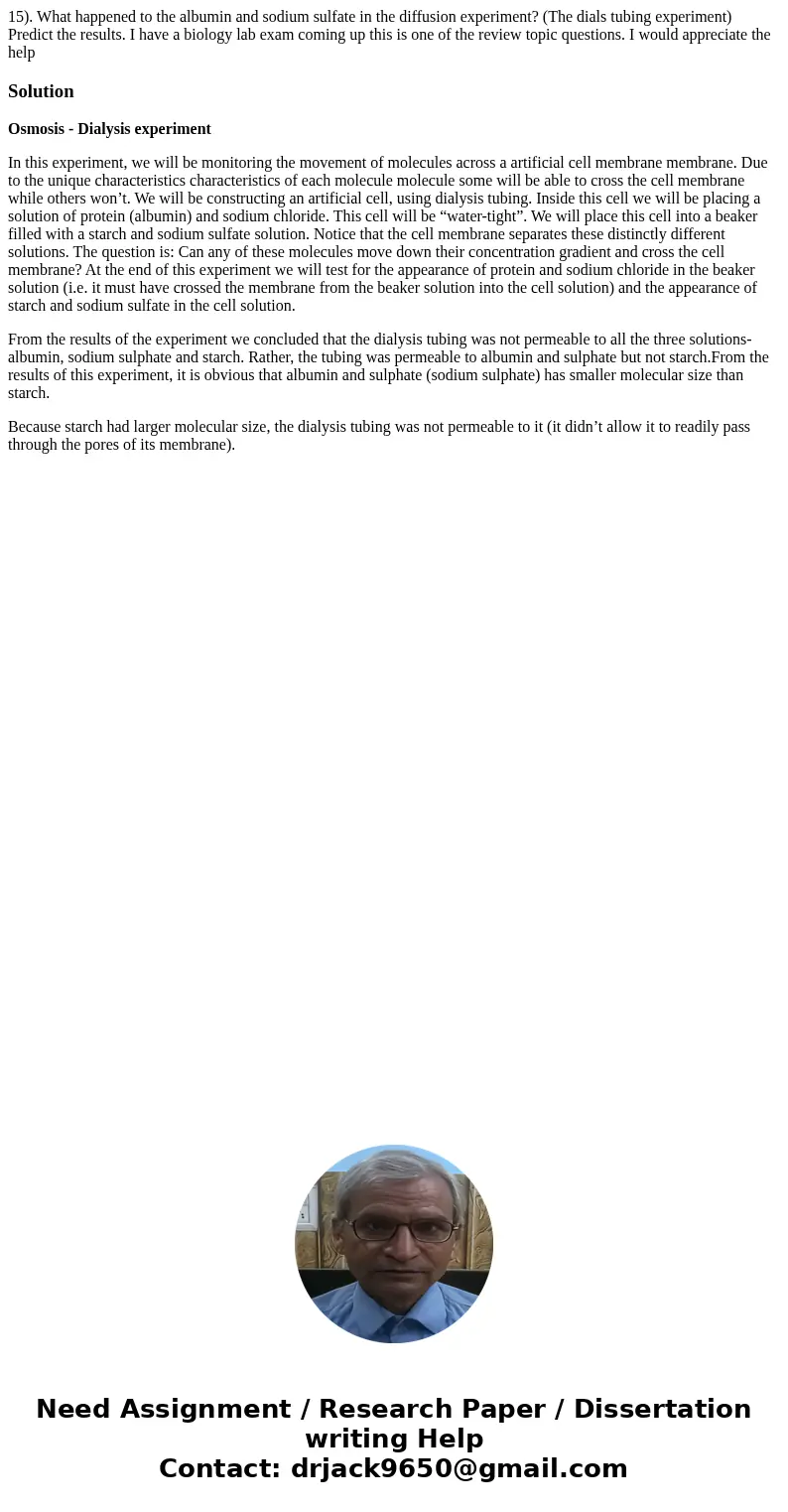15 What happened to the albumin and sodium sulfate in the di
15). What happened to the albumin and sodium sulfate in the diffusion experiment? (The dials tubing experiment) Predict the results. I have a biology lab exam coming up this is one of the review topic questions. I would appreciate the help
Solution
Osmosis - Dialysis experiment
In this experiment, we will be monitoring the movement of molecules across a artificial cell membrane membrane. Due to the unique characteristics characteristics of each molecule molecule some will be able to cross the cell membrane while others won’t. We will be constructing an artificial cell, using dialysis tubing. Inside this cell we will be placing a solution of protein (albumin) and sodium chloride. This cell will be “water-tight”. We will place this cell into a beaker filled with a starch and sodium sulfate solution. Notice that the cell membrane separates these distinctly different solutions. The question is: Can any of these molecules move down their concentration gradient and cross the cell membrane? At the end of this experiment we will test for the appearance of protein and sodium chloride in the beaker solution (i.e. it must have crossed the membrane from the beaker solution into the cell solution) and the appearance of starch and sodium sulfate in the cell solution.
From the results of the experiment we concluded that the dialysis tubing was not permeable to all the three solutions-albumin, sodium sulphate and starch. Rather, the tubing was permeable to albumin and sulphate but not starch.From the results of this experiment, it is obvious that albumin and sulphate (sodium sulphate) has smaller molecular size than starch.
Because starch had larger molecular size, the dialysis tubing was not permeable to it (it didn’t allow it to readily pass through the pores of its membrane).

 Homework Sourse
Homework Sourse